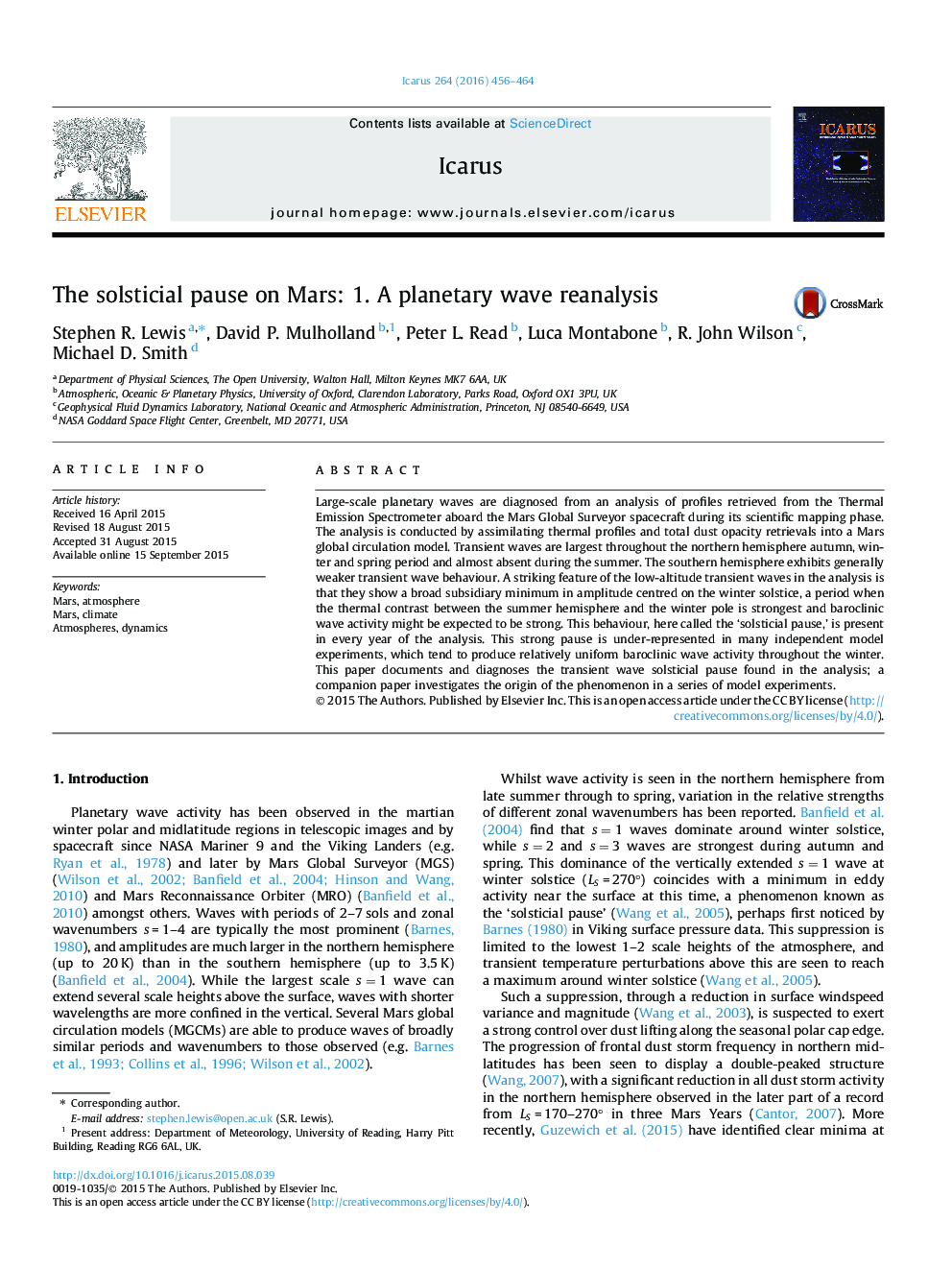| Article ID | Journal | Published Year | Pages | File Type |
|---|---|---|---|---|
| 8135928 | Icarus | 2016 | 9 Pages |
Abstract
Large-scale planetary waves are diagnosed from an analysis of profiles retrieved from the Thermal Emission Spectrometer aboard the Mars Global Surveyor spacecraft during its scientific mapping phase. The analysis is conducted by assimilating thermal profiles and total dust opacity retrievals into a Mars global circulation model. Transient waves are largest throughout the northern hemisphere autumn, winter and spring period and almost absent during the summer. The southern hemisphere exhibits generally weaker transient wave behaviour. A striking feature of the low-altitude transient waves in the analysis is that they show a broad subsidiary minimum in amplitude centred on the winter solstice, a period when the thermal contrast between the summer hemisphere and the winter pole is strongest and baroclinic wave activity might be expected to be strong. This behaviour, here called the 'solsticial pause,' is present in every year of the analysis. This strong pause is under-represented in many independent model experiments, which tend to produce relatively uniform baroclinic wave activity throughout the winter. This paper documents and diagnoses the transient wave solsticial pause found in the analysis; a companion paper investigates the origin of the phenomenon in a series of model experiments.
Related Topics
Physical Sciences and Engineering
Earth and Planetary Sciences
Space and Planetary Science
Authors
Stephen R. Lewis, David P. Mulholland, Peter L. Read, Luca Montabone, R. John Wilson, Michael D. Smith,
